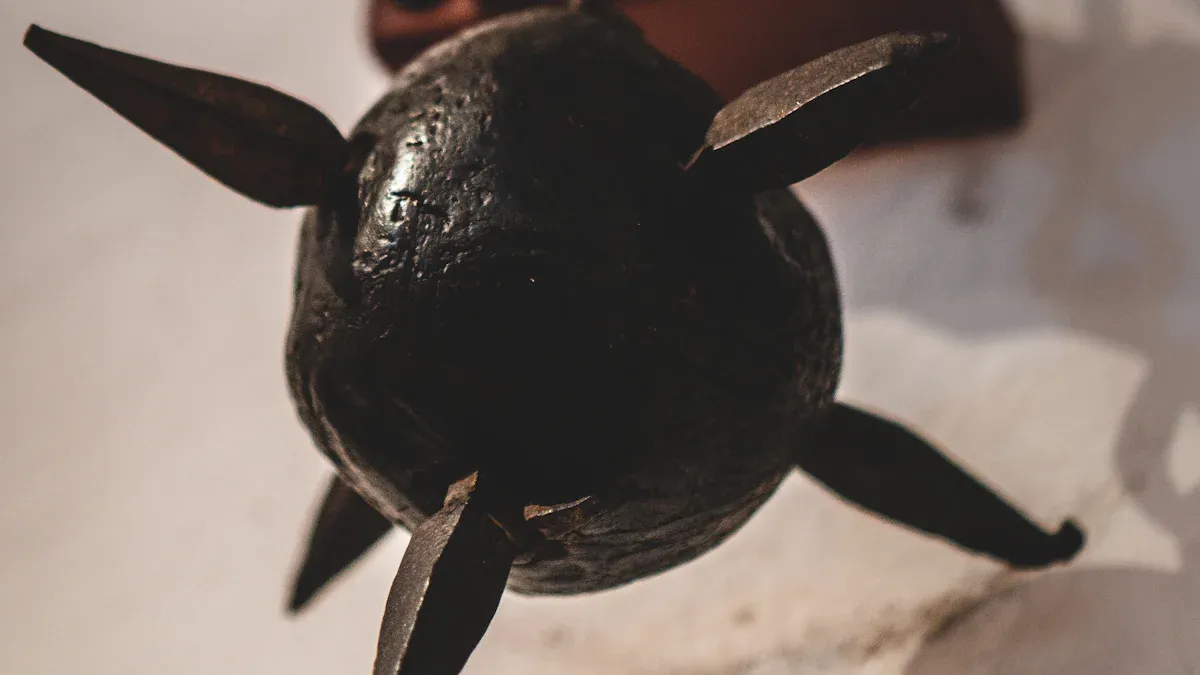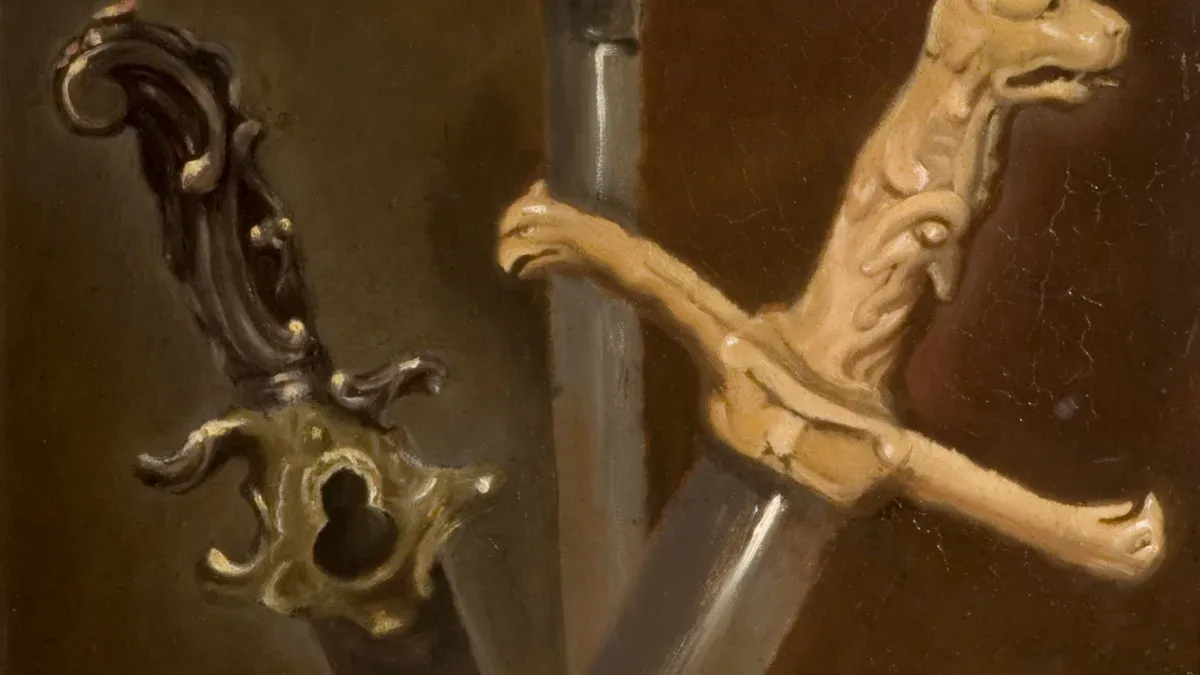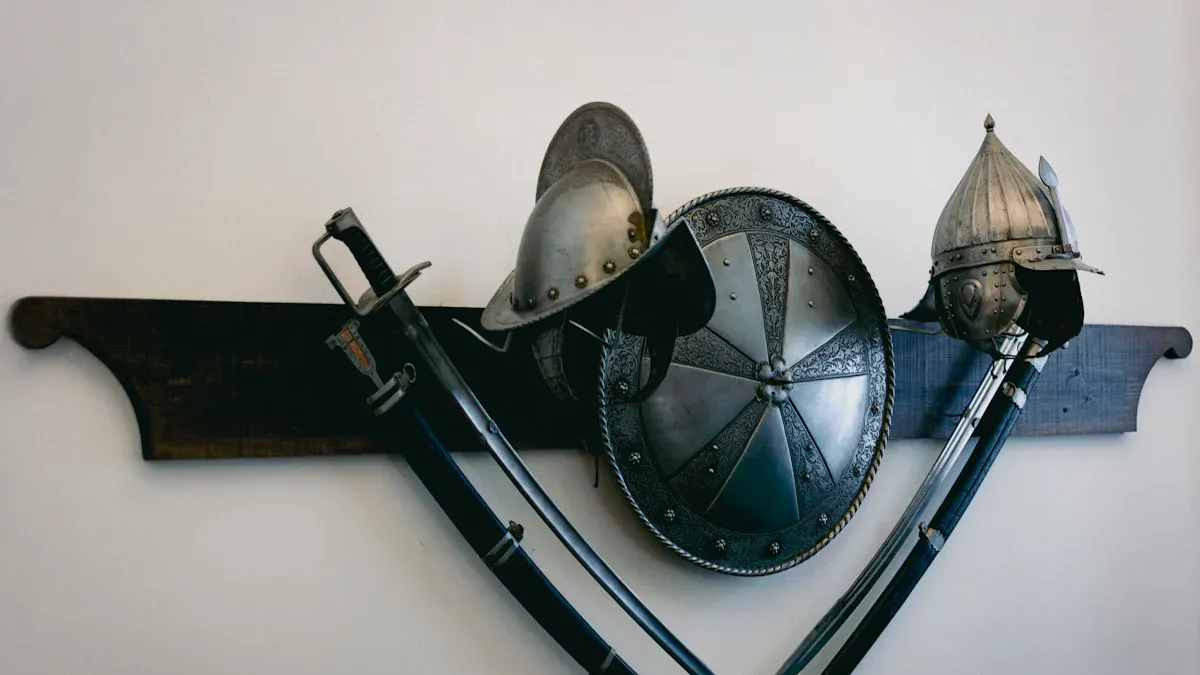Exploring the Design of the Ball and Chain Weapon

The ball and chain weapon is a fascinating piece of history. This ball and chain weapon played a significant role in battles, art, and culture, symbolizing power and punishment across various societies. Its unique design has influenced artistic creations and inspired modern adaptations. These characteristics highlight the enduring cultural impact of the ball and chain weapon. Whether utilized in warfare or as a symbolic representation, it reflects the remarkable craftsmanship of ancient makers.
Key Takeaways
- The ball and chain weapon has a long history. It dates back to the 4th century BC and was useful in battles.
- Many cultures changed the ball and chain design. This led to weapons like the mace and flail, each with special uses.
- Learning how the ball and chain works is important. Its weight and swinging style make it powerful in fights.
- Being safe is very important when using the ball and chain. Always wear safety gear and practice with lighter versions first.
- The ball and chain still inspires modern martial arts and movies. This shows how important it remains today.
Historical Evolution of the Ball and Chain Weapon

Origins and Early Use
The ball and chain weapon has been around for centuries. Evidence shows it was used as early as 4th century BC. Warriors liked it because it hit hard and kept them safe. In medieval times, knights and soldiers used it often. Its design—a heavy ball on a chain or rope—was effective. It could hit with force and reach far. This made it useful, especially against armored enemies.
Development Across Regions
The ball and chain weapon changed in different places and times. Its flexibility made it useful in many battles. The table below shows how it developed in various regions:
| Culture/Period | Description |
|---|---|
| Ancient Warfare | Helped warriors strike hard while staying at a distance. |
| Medieval Era | Knights used it as a backup weapon for attack and defense. |
| Variations | Included the mace, flail, morning star, and chain whip, each with special features. |
| Global Usage | Versions appeared in Europe, Asia, and the Middle East, showing cultural changes. |
These differences show how societies adjusted the weapon to fit their needs.
Variants and Adaptations Over Time
Over time, the ball and chain weapon was improved in many ways. Early designs were simple, but later ones added new features. For example:
- Mace: A rounded or sharp head for crushing hits.
- Flail: A longer chain and bigger ball for more reach.
- Morning Star: A spiked ball for piercing armor.
- Chain Whip: A flexible type with many weights for quick moves.
These changes show how creative ancient makers were. Each version had a purpose, keeping the weapon useful in different times and battles.
Design and Mechanics of the Ball and Chain Weapon

Key Parts of the Weapon
The Ball: Material and Shape
The ball is the most noticeable part of the ball and chain weapon. It is made to be strong and hit hard. Makers used heavy metals like iron or steel for powerful strikes. Some balls were smooth for blunt hits, while others had spikes to pierce armor. The ball’s size and weight changed based on its purpose, balancing strength and ease of use.
The Chain: Strength and Flexibility
The chain links the ball to the handle, allowing it to swing. Made from tough materials like steel, it handles repeated use. The chain’s length affects how far it can reach. Longer chains give more range but need more skill to control. Its flexibility helps build speed, making it useful in fights.
The Handle: Grip and Control
The handle helps you hold and control the weapon. Usually made of wood or metal, it has a textured surface to stop slipping. A good handle lets you swing the weapon accurately. Its design also reduces strain, so you can use it longer in battles or practice.
How It Works and Swinging Techniques
Building Speed
To use the ball and chain weapon well, you need to learn momentum. Swinging the ball in circles makes it faster and stronger. Timing is key; releasing the swing at the right time gives the best hit. This takes practice to get right.
How It Hits
The weapon’s power comes from its weight and speed. When the ball hits, its energy turns into a strong force. This makes it great for breaking armor or structures. Knowing how it works helps you use it better.
Different Designs
Spiked or Smooth Ball
Different ball designs work for different fights. Spiked balls are good for breaking through armor. Smooth balls are better for heavy hits. Picking the right one depends on your plan and the enemy’s defense.
One Chain or Many Chains
Some weapons have one chain for simple use. Others have multiple chains for more options. Multiple chains allow quick hits and tricky moves, making them harder to block.
Tip: Try out different designs to learn their strengths and weaknesses.
Practical Uses and Modern Adaptations
Role in Historical Combat
Advantages in Warfare
The ball and chain weapon worked well in old battles. Its design let fighters hit hard while staying safe. Here are some reasons it was useful:
- It could smash through armor with strong hits.
- Knights used it as a backup weapon with their swords.
- Its swinging motion made it tricky to block.
In medieval fights, its speed and power gave it an advantage. Soldiers used it to defeat armored enemies with one strong hit.
- Swinging made it faster and harder to predict.
- The chain and ball caused heavy damage on impact.
- It worked well against armor, causing serious harm.
Limitations and Challenges
Even with its strengths, the weapon had problems. Swinging it needed skill and practice to control. Without training, it was hard to aim or avoid self-injury. Its size and weight made it tough to use in tight spaces or long fights. Also, it wasn’t great for close combat since it needed momentum to work well.
Modern Applications
Martial Arts and Training
Today, the ball and chain weapon is used in martial arts. Styles like Arnis and Escrima use similar tools for learning coordination and defense. Modern versions are lighter and safer for practice. Performers also show off their skills with these weapons in shows, focusing on speed and accuracy.
Representation in Media and Pop Culture
The ball and chain weapon still appears in modern media. Movies and art often use it to show strength in fantasy or history. Its design has even inspired extreme sports, like chain whip contests. This shows how the weapon remains important and adaptable.
| Aspect | Description |
|---|---|
| Historical Significance | Seen as a symbol of power and punishment. |
| Artistic Inspiration | Shown in movies and art to represent strength. |
| Martial Arts | Used for training in defense and coordination. |
| Performance Art | Displayed in shows to highlight skill and speed. |
| Extreme Sports | Changed versions used in events like chain whip contests. |
Training Techniques and Safety Considerations
Learning to Use the Ball and Chain Weapon
Basic Movements and Drills
To learn the ball and chain weapon, start with simple moves. Stand with your feet apart, about shoulder-width, for balance. A steady stance helps you stay stable while swinging. Begin with easy swinging drills. Move the ball in slow, controlled circles to gain momentum. This improves your hand-eye coordination and timing. Practicing often will make you more accurate and in control.
Try drills that focus on hitting targets. Aim at a still object to sharpen your strikes. Slowly increase the speed and strength of your swings. These exercises help you stay balanced and agile. They also prepare you for harder techniques later.
Advanced Combat Techniques
After learning the basics, try advanced moves. Use different swing styles to change your attacks. Side swings cover wide areas, while downward swings hit hard. Timing is very important now. Let go of the swing at the right time for the best hit.
Practice moving your feet with your swings. This makes your attacks less predictable. It also makes the weapon better for fights or shows. Advanced drills test your coordination and help you create new attack patterns.
Ensuring Safety During Practice
Protective Gear
Safety is key when using the ball and chain weapon. Wear gear to avoid injuries. Padded gloves protect your hands during long practice sessions. Arm guards and helmets keep you safe from accidental hits. Use a lighter-practice weapon to lower the risk of harm.
Avoiding Common Injuries
Good technique stops most injuries. Don’t stretch your arm too far while swinging. This protects your shoulder and wrist from strain. Always hold the handle tightly so it doesn’t slip. Warm up before training to get your muscles ready.
Tip: Train in a big, open space. This keeps you from hitting objects or people. It also helps you stay focused and safe.
Legacy and Cultural Significance
Symbolism in History and Mythology
The ball and chain weapon has held strong meanings in history. It often showed power and control in ancient battles. Leaders used it to display their strength and authority. In some places, it stood for punishment or control, used on prisoners or during executions.
Myths and art also highlight this weapon’s design. Its heavy look often shows great strength or responsibility. You can see its influence in movies and books. It might represent a hero’s bravery or a villain’s dangerous power.
- It showed power and rank in old battles.
- Some cultures used it to punish or control people.
- Its design inspired art showing strength and skill.
Influence on Modern Weaponry
The ball and chain weapon has shaped modern weapon designs. Tools like the nunchaku and chain whip come from its mechanics. These newer versions focus on speed and skill instead of just strength.
Its ideas also appear in military tools. Flexible, swinging designs inspired devices for clearing mines or breaking barriers. This proves how old designs still help create modern tools.
Representation in Popular Culture
The ball and chain weapon is still famous in media today. You’ve probably seen it in movies, games, or comics. It often shows raw power or links to medieval fighting. Characters using it are shown as strong or skilled.
In fantasy worlds, the weapon is often exaggerated. It might have bigger spikes or glowing chains for drama. Its role in pop culture keeps its story alive, reminding us of its history and special design.
Fun Fact: Its swinging motion makes it exciting in action scenes, adding thrill to battles.
The ball and chain weapon shows how clever ancient people were. Its design mixed strength and flexibility, making it useful in fights and meaningful in culture. Today, its impact is seen in tools, martial arts, and media. Learning about this weapon shows how battles changed over time and how ideas shaped history. By looking at its design and history, we can admire the skill of old makers even more.
FAQ
What is the main purpose of the ball and chain weapon?
This weapon was made for fighting. The heavy ball and flexible chain let fighters hit hard while staying safe. It worked well against enemies wearing armor.
How do you safely practice with a ball and chain weapon?
Use a lighter practice weapon and wear safety gear like gloves and helmets. Practice in a big, open area to avoid accidents. Start with slow swings before trying faster moves.
What materials were used to make the ball and chain weapon?
Ancient makers used strong metals like iron or steel for the ball and chain. The handle was usually wood or metal, making it sturdy and easy to hold during fights.
Are there modern uses for the ball and chain weapon?
Yes! Martial artists use it to train for defense and coordination. It’s also seen in movies, games, and shows, showing its importance in history and culture.
What are the key differences between spiked and smooth balls?
Spiked balls can break through armor, making them good for armored enemies. Smooth balls hit hard and are better for smashing shields or causing big damage.
Tip: Pick the design that matches your training or practice needs.



